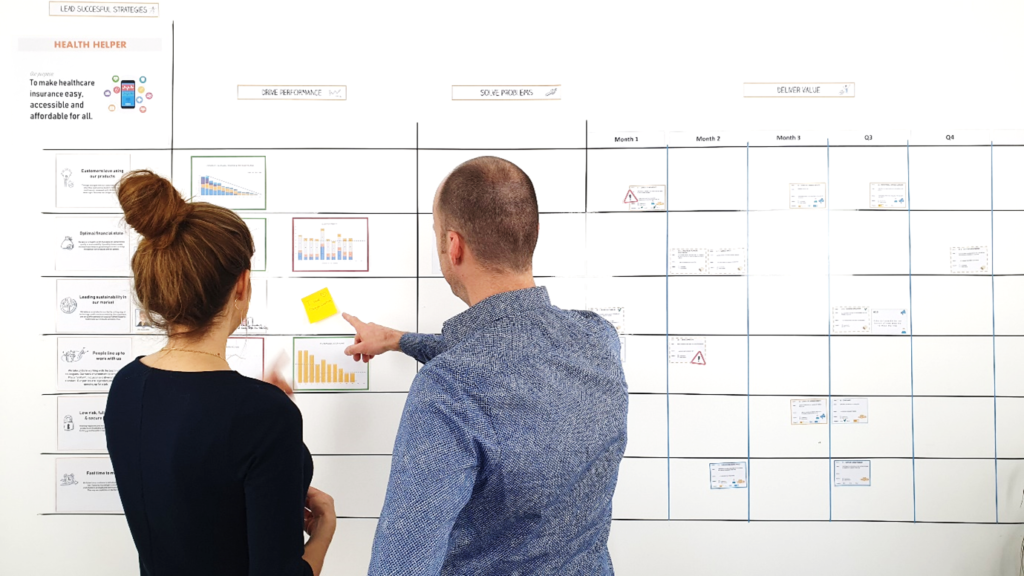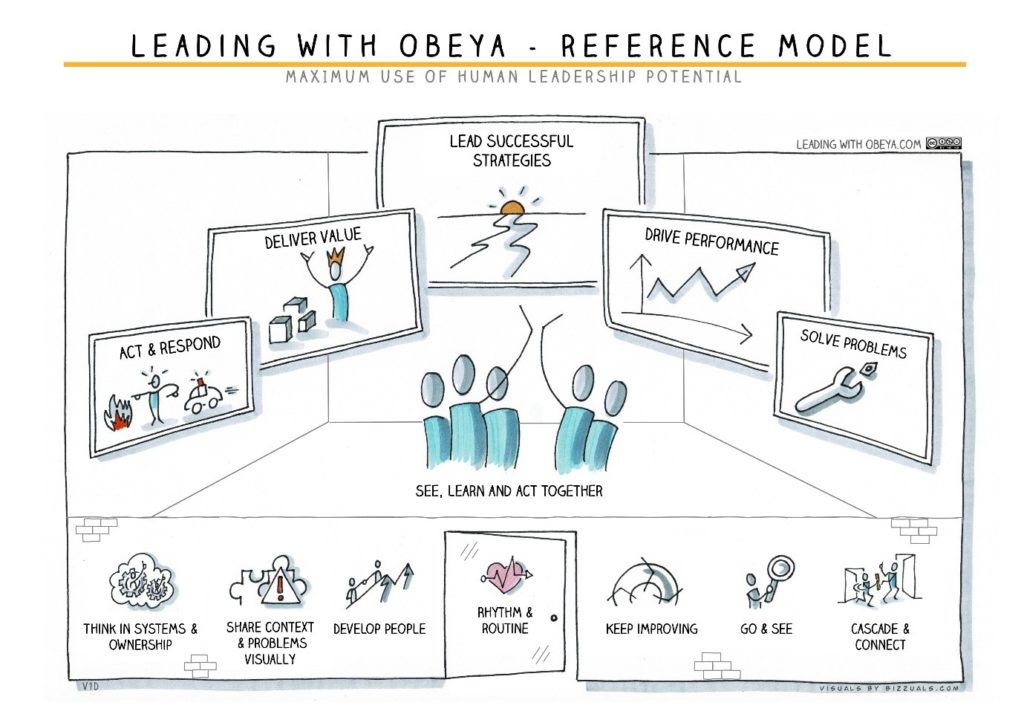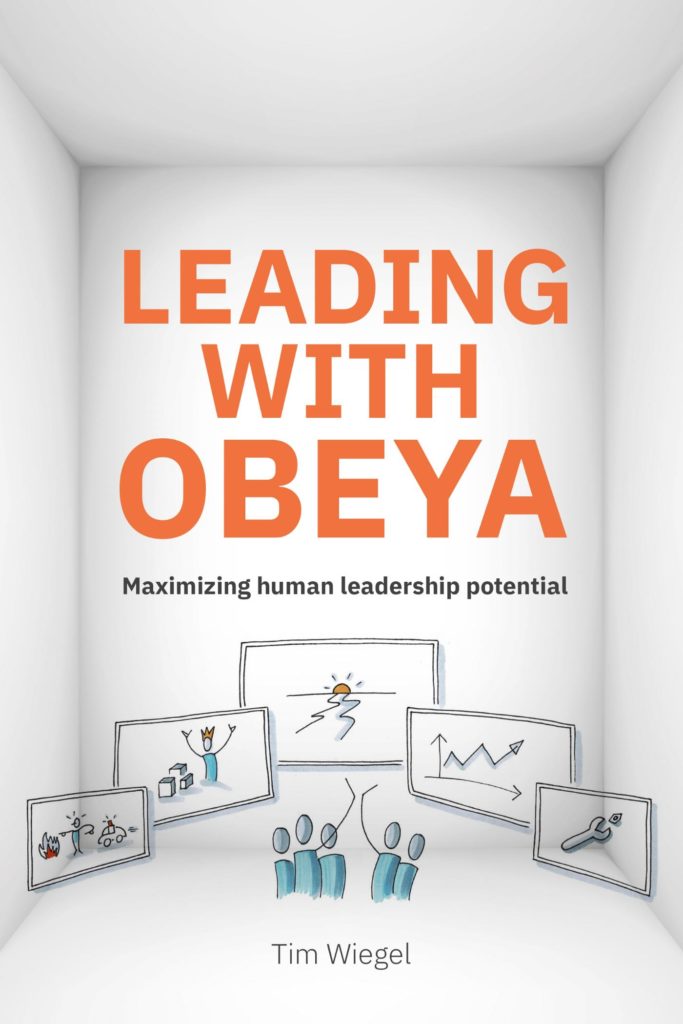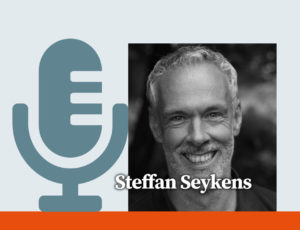
Leadership with Obeya (meaning ‘big room’ in Japanese) is about the challenges of leadership at every level of the organization and provides a means of how to deal with these challenges. The driving force for the success of every team and organization are the people. In the Obeya we use our strongest sense (the eyes) and develop effective habits and thought patterns to utilize the full human leadership potential.
There’s probably a lot more potential in your leadership team than you’re getting out of it right now. Where self-managing teams, Lean and Agile working have been trending topics over the past few years, they mainly focus on the operational teams. But what about the teams at leadership level? Don’t they also have the need to improve or can they continue doing what they’ve always done?
Each person or team with a leadership role basically has three tasks to perform:
- Establish a goal that we want to achieve with the organization.
- Ensure that the capabilities are in place to achieve that goal.
- Ensure that the organization has a plan to realize the goal as effectively as possible (together).
Common challenges with leading organizations
In practice however, these three things are not so easy as they sound. In my book Leading With Obeya, four main reasons are identified why leading organizations is difficult:
- The complexity of organizations and the world around them makes them hard to control.
- Our brain constantly tends to make errors (bias) influencing our decisions in world that already is complex enough.
- Based on our dominant management practices, we are used to providing individuals with objectives to chase (often in the short term). This leads to competition between teams and departments pursuing self-interest rather than stimulating coherent and collaborative working across the organizational system.
- We see leaders as individuals who each lead the organization with their own working methods, plans and priorities. We miss the opportunity to see leadership as a craft that all leaders could practice together while systematically creating rhythm, synergy and coherence throughout the organization.
People in a leadership or management position are usually intelligent, well-intentioned individuals, often working 50+ hours a week and thus spending a great deal of their personal time and energy in their jobs. But if they are not dealing with these four challenges, the individual efforts are not as effective as they could be. And that’s a shame, given the investment and dedication that many leaders and managers put into their jobs.
How to deal with these challenges?
How can we deal with these challenges? How can we ensure that organizations fully use of their leaders’ capabilities? And how is it possible that, despite the countless books on leadership, we haven’t made real progress for decades? It seems like we’re moving from one management hype to another without really seeing better results.
A lot of literature on leadership is about vision, style and ways of thinking (mindset). But there is a lack of practical tools to do things differently. When Deming and Shewart introduced a cycle of continuous improvement in the middle of the last century, everyone thought it was a good idea. But in practice, we often only reach the Plan and Do stages, and never progress to Study and Act. Just thinking that quitting smoking is a good idea, does not mean that you will stop the next day or even enable you to effectively stop altogether. To make these changes work, we need to teach ourselves new, effective habits. And the same goes for new and effective leadership habits. We may complain about long and fruitless meetings, and we might have some ideas how to make them more effective, but this alone doesn’t mean we will effectively put them into practice.
Most teams I encounter think they need to improve the way they work. I regularly ask them what they want to improve and these are the most commonly heard responses. They want:
- fewer strategic plans that remain vague and get lost in the archive after which we get stranded in the daily operations, but more visible results in the short and long term;
- less working in silos, but more collaboration as a team on common goals with clear responsibilities;
- fewer meetings that feel ineffective with few decisions and actions, but more conversationswith structure, discipline and a focus on results.
Changing your leadership game with Obeya
If you keep doing what you’ve always done, you’ll get what you’ve always had. With this in mind, Toyota developed the Prius in the late 1990s using the Obeya. The result was a car that was twice as economical than any comparable car on the market at that time, it was affordable and the most successful hybrid car in the world. And the Prius was also developed faster than any comparable car. This was only possible by doing things completely different and not just thinking differently. What Toyota had achieved in their large room was the extension of old habits by implementing new and more effective ways of working.

An Obeya is the space where a team convenes to see, learn and act together in order to achieve their common goals. Walking into an Obeya means that you will find the necessary information on the walls to be successful. The team regularly convenes in several sessions to replace their traditional management meetings. In each session they discuss different sections of the Obeya, covering all aspects of their management and leadership responsibilities:
- Lead successful strategies – It starts by explaining the higher goal and how the team intends to fulfill it, eliciting potential customer or user needs in relation to the product or service offered. This shows which capabilities are needed from the organization to achieve those goals. All key capabilities of the organizational system should be represented because they are all connected to one another. Capabilities are things like ability to build quality products, maintain the right, motivated staff, be profitable, sustainable, etc.
- Drive performance – There is also a section in the Obeya that explains to what extent these capabilities are actually performing on the level that the team thinks they should. These could be performance indicators such as financial performance and customer and employee satisfaction. The team develops and improves these indicators to better understand performance but also to expose problems in their capabilities that need to be addressed.
- Deliver value – Another section depicts the actual and planned projects and the work that is planned, using the organization’s scarce resources and time most efficiently. It shows how value flows through the organization, where it is impeded and whether we are in control of our delivery.
- Act and respond – This section focuses not on the planning side of things but it addresses all aspects of running the organization on a daily basis. With regular short stand-ups, the management team discusses requests and problems together, ensuring operational teams can . This makes them very efficient at tackling problems fast and making decisions with the inclusion of valuable context of their colleagues.
- Solve problems – This last area is the summum of the Obeya in terms of actually showing evidence of structured problem solving and true continuous improvement. Using problem solving methods, the team shows not only what problems they’re addressing, but also its progress. This progress will reflect the improved performance in the Drive performance section.
What is so effective about working with Obeya? The first thing you will notice when you see an Obeya is the visualization. People in the Obeya can make optimal use of their strongest sense: their eyes. The Obeya creates insight, overview, prevents errors of thought, ensures that you always have the relevant information at hand and helps you to set priorities while uncovering obstacles and problems. Toyota has been working with visual management since the middle of the last century and is very good at this. To get close to their level you will have to practice for a while, but adding this practice will have instant value.
Moving forward and even more important than presenting information on the wall in an attractive way is the introduction of continuous practice of effective habits. If you don’t read and use the information on the wall correctly, the investment of hanging it up in the first place will yield little result. It is important to include the principles and ways of thinking in your daily practice. There is a meeting routine in the Obeya that helps us put great ideas and principles into practice effectively on a daily basis. This may feel uncomfortable and difficult at first because you are doing things differently than you are used to doing. But this is a good sign: you are learning something new. And after a while it will become a habit, it will feel better and easier and you will be convinced that this is a great way to work.
In Leading With Obeya you can read about the visualizations and the principles that guide effective behavior patterns in the big room. The book also contains a reference model, which shows what you should expect to see on the walls of an Obeya to lead your organization, but also what principles for thinking & acting are expected of the team. These principles are represented as a foundation on the wall, with the principle of rhythm & routine as an entrance door to the Obeya.

When you get started
When you start with Obeya, you will notice that continuous improvement is not about achieving (short-term) goals, but that the true value lies in continuously improving the way that you achieve goals. You improve by doing instead of just talking about it. You will slowly shift from focusing on goals towards achieving a continuous improvement mindset, if the principles are practiced with discipline. You literally have to train your brain (and the brains of people you work with) with effective routines and questions to create these new habits.
Using visualization techniques and following strict routines in your meetings will help your team a great deal to immediately put a more effective working method into practice and stick to it. And the great thing is, not only your team can learn this, but also teams above, below, left and right in the organization. The method is in line with Lean- and Agile-movements but also fits perfectly into traditionally driven organizations, provided that you are willing to adopt all aspects of Leading with Obeya – if you have a working system, you can’t expect the system to still function properly if you take out parts of it.
From a sample of teams that started with Leading with Obeya in 2020, 92% indicate that it has improved effectiveness of the way of working. Most frequently mentioned benefits are more effective meetings, better cooperation and clear goals and responsibilities. The main challenge for teams in the remaining 8% was to find out that they need other teams in their department to also improve their way of working to gain widespread benefits for their organizational system.
Working with Obeya is a way to maximize human leadership potential at all levels of your organization. Leading With Obeya explains how to do just that.
- Want a chance to win a free copy of Leading With Obeya? Participate in the <5 minute survey on leadership systems: https://sprw.io/stt-d84285
Author: Tim Wiegel






